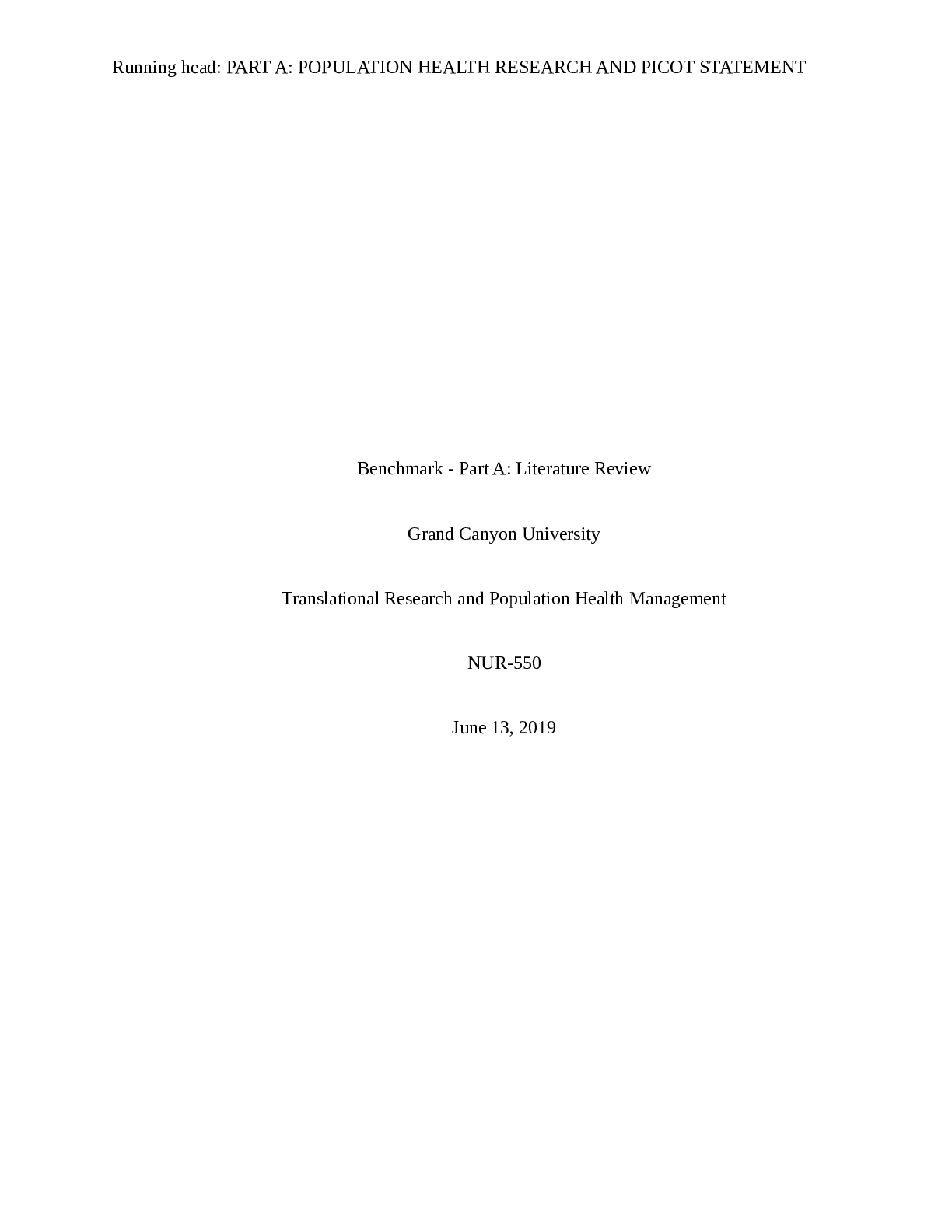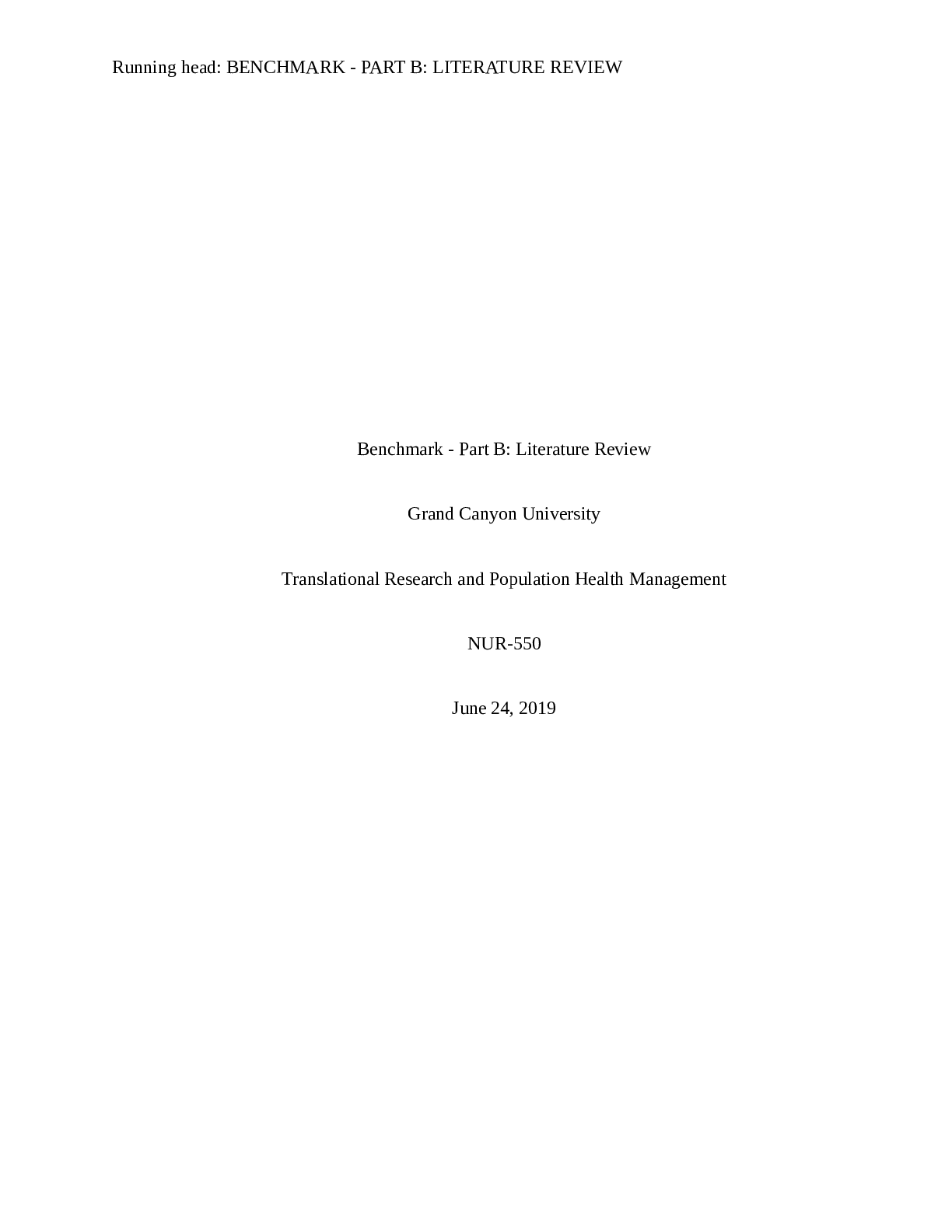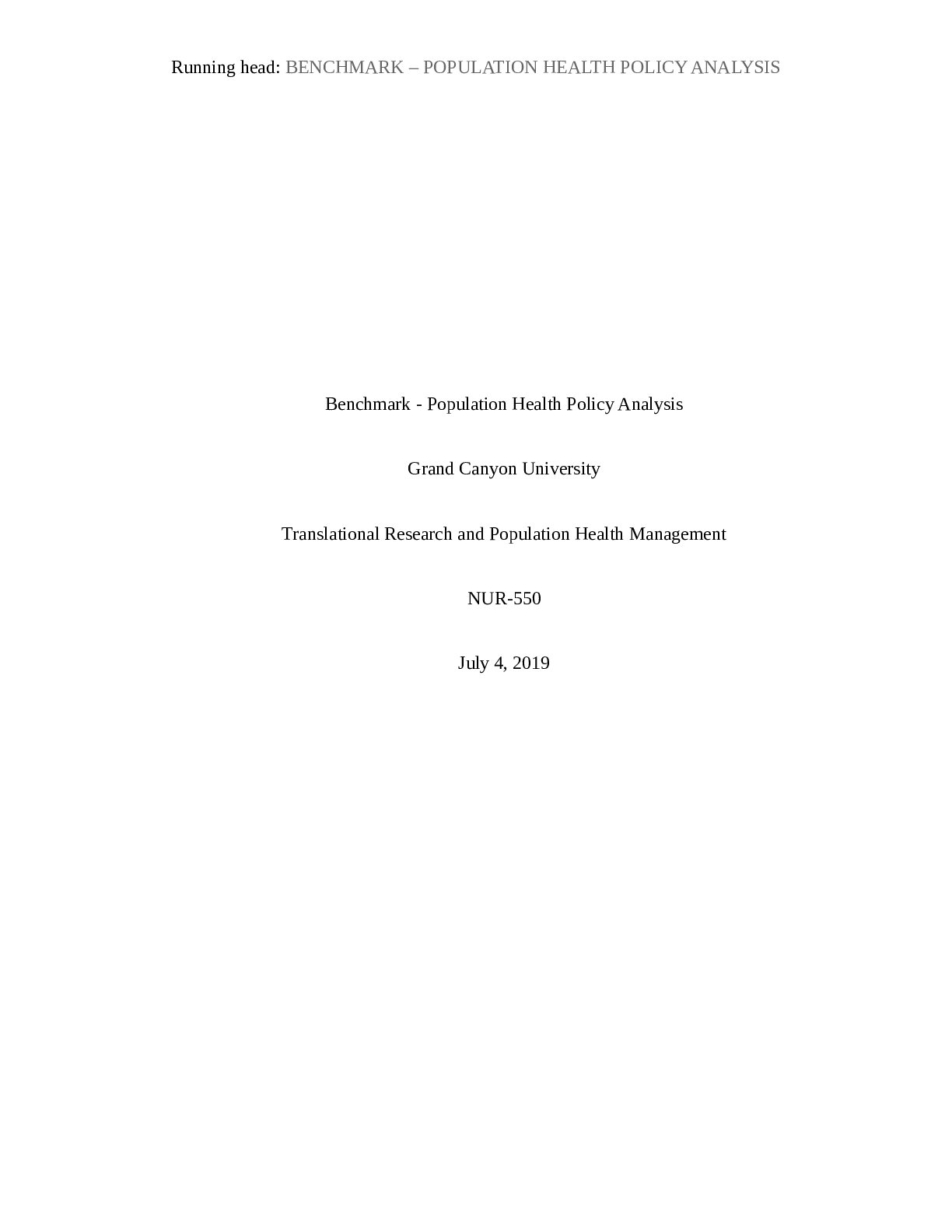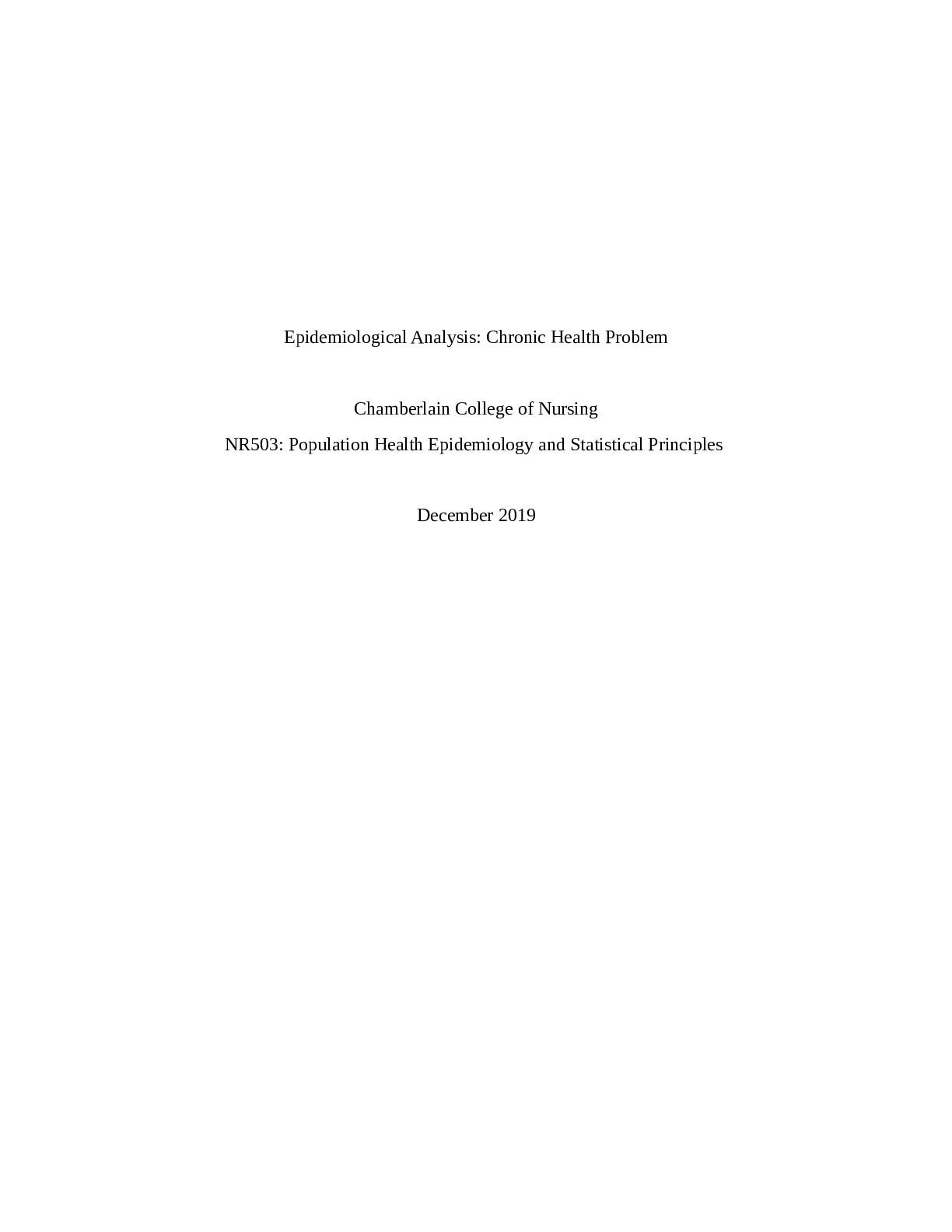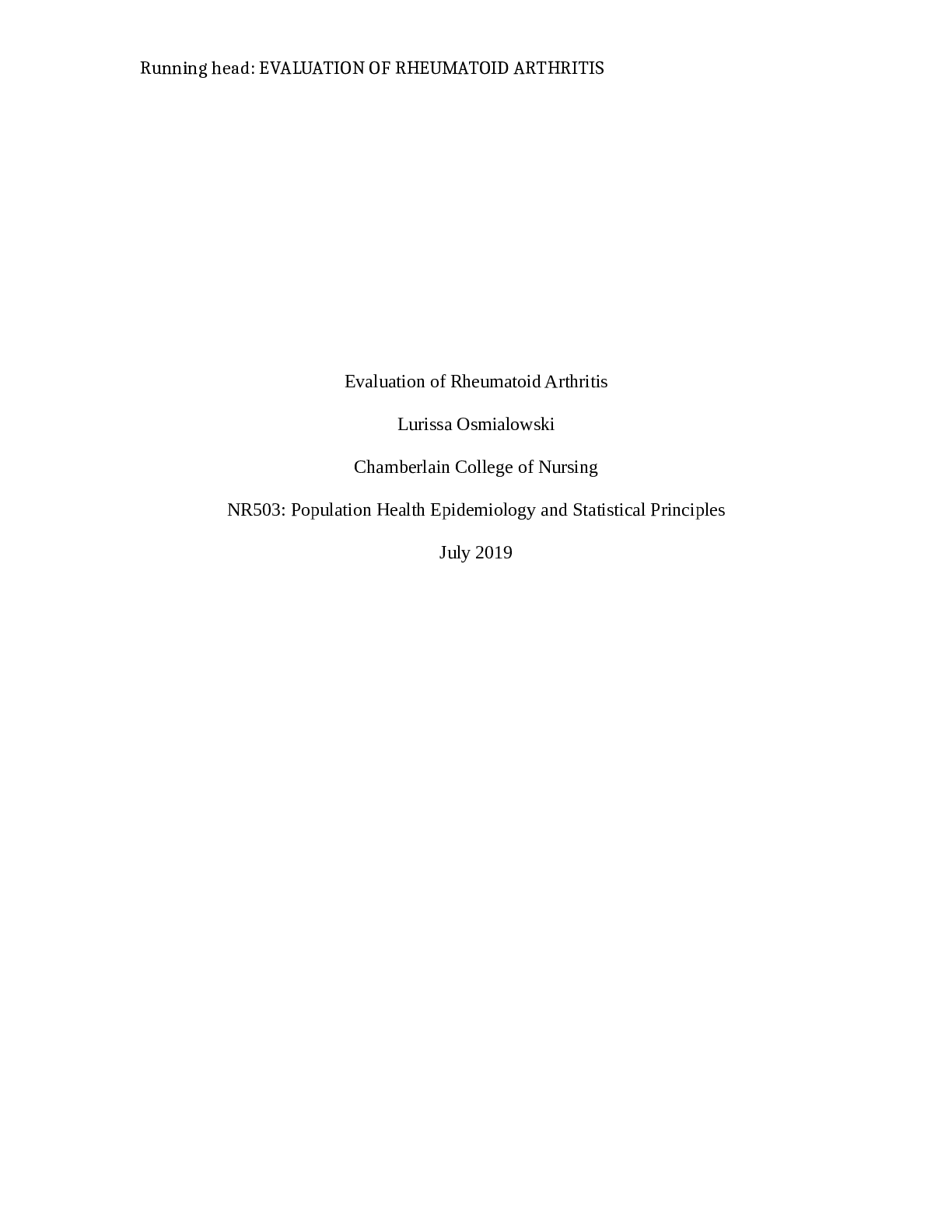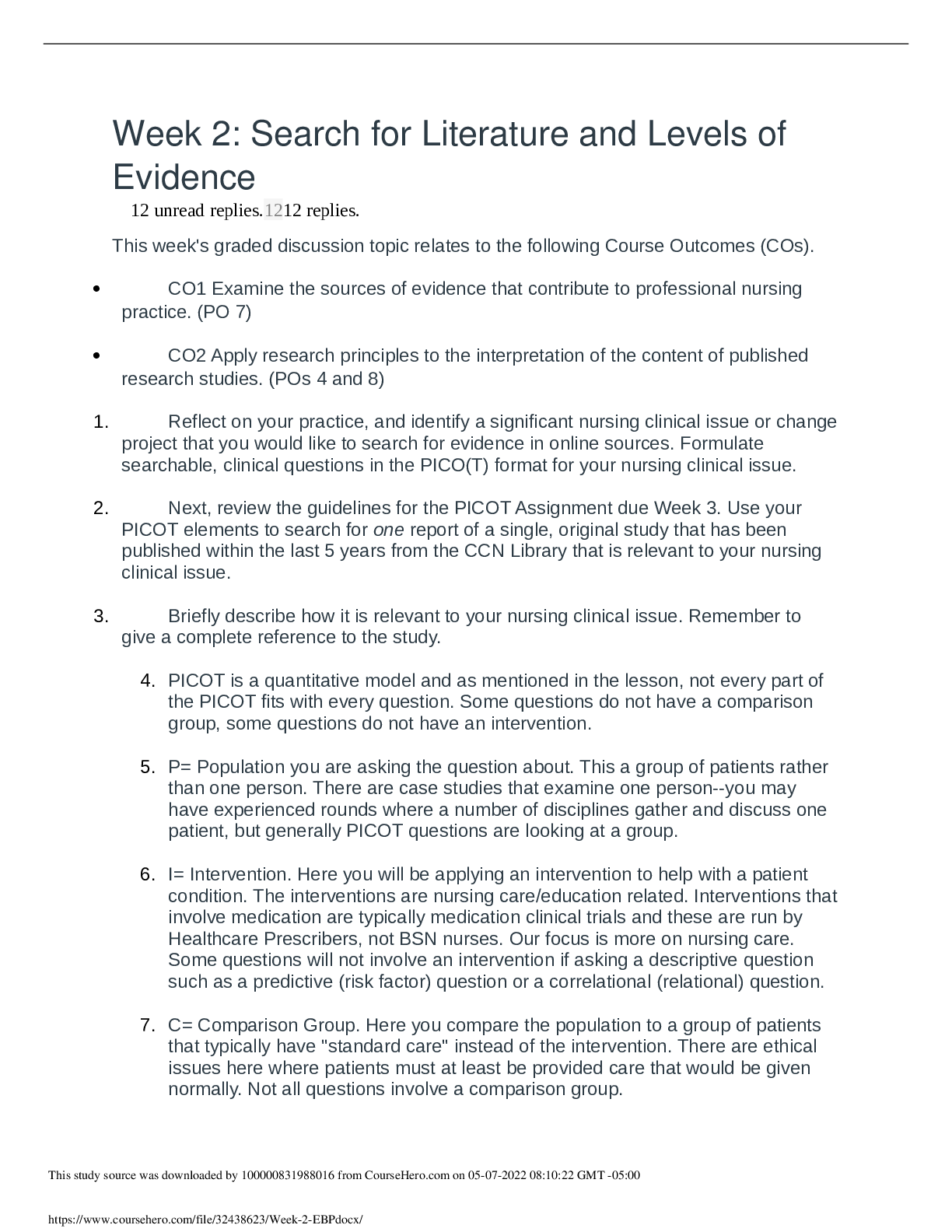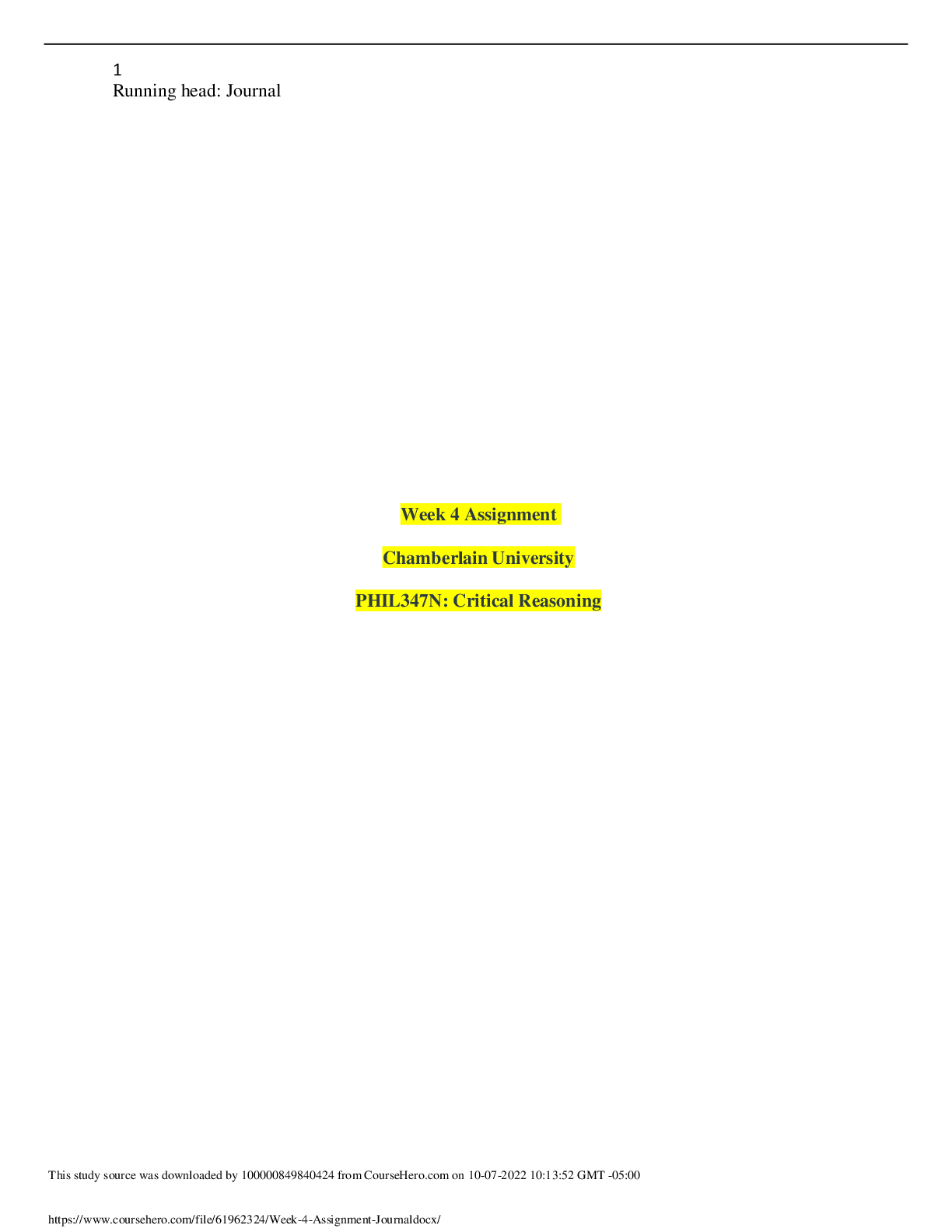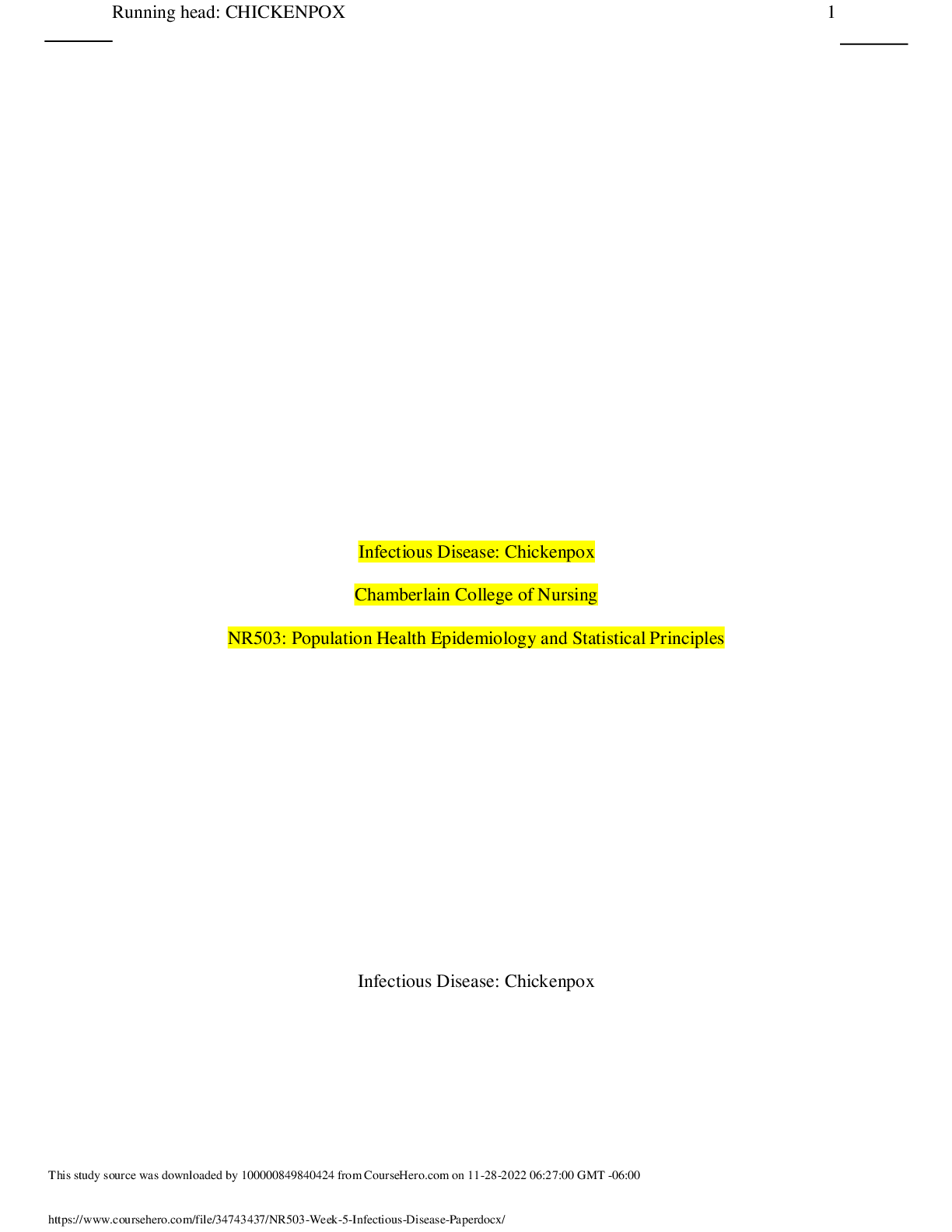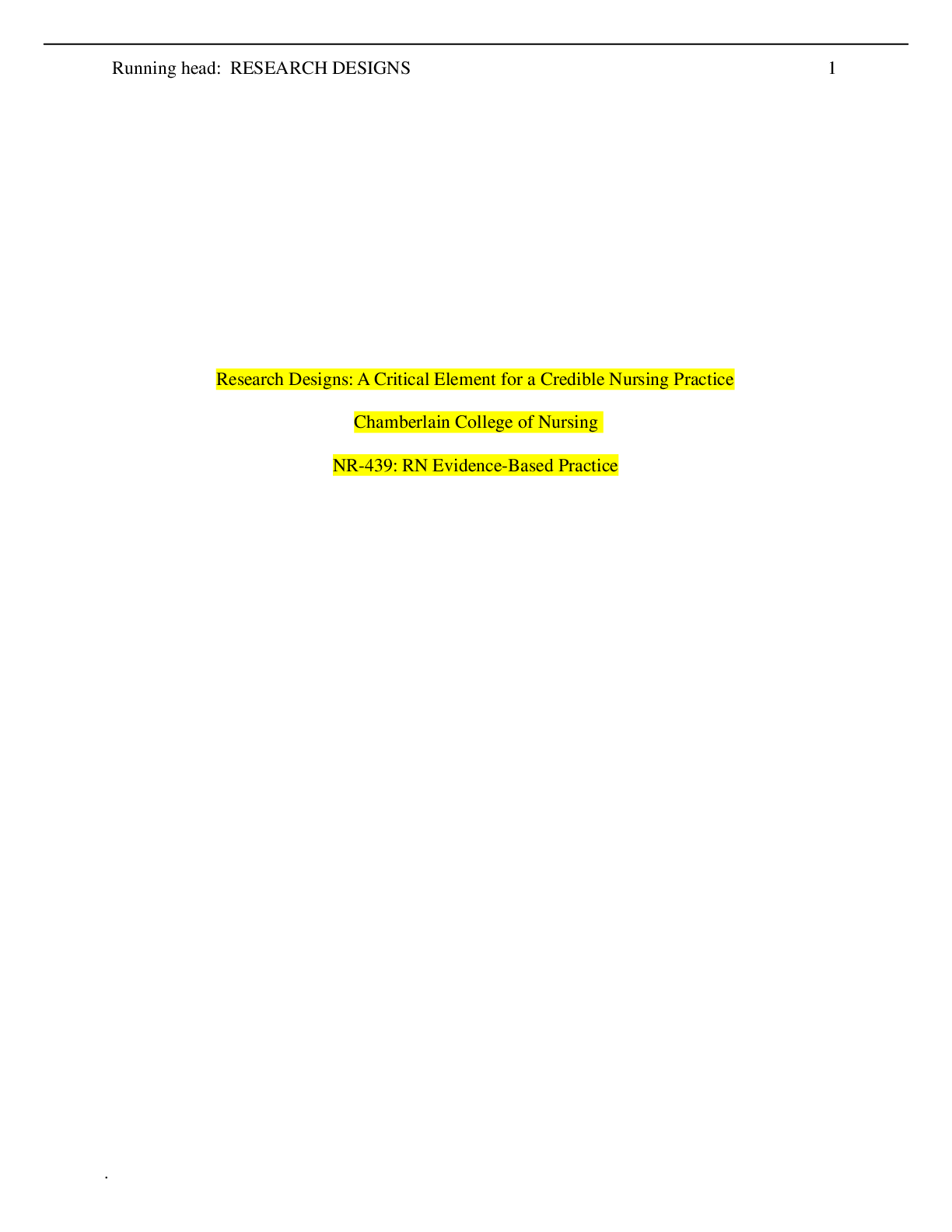*NURSING > ESSAY > NR 503 Week 5 Assignment; Infectious Disease Paper - Hepatitis C: Spring 2020,Chamberlain College Of (All)
NR 503 Week 5 Assignment; Infectious Disease Paper - Hepatitis C: Spring 2020,Chamberlain College Of Nursing
Document Content and Description Below
INFECTIOUS DISEASE PAPER INFECTIOUS DISEASE PAPER: HEPATITIS C Natalie Wangrycht Chamberlain College of Nursing NR 503: Population Health Epidemiology and Statistic Principles November 2019 This... study source was downloaded by 100000831988016 from CourseHero.com on 05-07-2022 04:44:23 GMT -05:00 https://www.coursehero.com/file/51770950/Infectious-Disease-Paperdocx/ 2 INFECTIOUS DISEASE PAPER Infectious Disease Paper: Hepatitis C Hepatitis C is a viral infection that causes an infection in the liver of its host. For some, this virus can be a short-term illness if caught early before damage has been done. However, 70%-80% of people that become infected with the Hepatitis C virus are in for a chronic infection and shall expect long-term health problems including death (Centers for Disease Control and Prevention, 2019). The Centers for Disease Control and Prevention (2019) reports that in 2017, a total of 3,186 cases of acute hepatitis C were reported. “After adjusting for under-ascertainment and under-reporting, an estimated incidence of 44,300 acute hepatitis C cases occurred in 2017” (Centers for Disease Control and Prevention, 2019). The CDC also list a prevalence of 2.4 million people in the United States are living with the virus. The CDC reports that West Virginia and Massachusetts had the highest incidence rate of acute hepatitis C which is 5.6 and 4.8 per 100,000 people, respectively. They also report that ages 20 to 29, males, and American Indians/Alaskan Natives to have the highest incidence of acute infections in 2017. Mortality rate for the virus is highest in age group 55 to 64 years old with 19.7 per 100,000 people (Centers for Disease Control and Prevention, 2019). Many times people do know know that they have the virus until they are clinical ill. People with newly acquired HCV infection have mild symptoms. These mild symptoms can include fever, abdominal pain, dark urine, fatigue, clay-colored stool, loss of appetite, nausea, vomiting, joint pain, and jaundice. The incubation period is usually about 2 to 12 weeks. However, People that develop chronic HCV infection are asymptomatic or have symptoms such as chronic fatigue and depression that could mimic other health issues. Eventually, they develop chronic liver disease such as cirrhosis and liver cancer. Chronic HCV can progress slowly without any signs or symptoms for several decades. This study source was downloaded by 100000831988016 from CourseHero.com on 05-07-2022 04:44:23 GMT -05:00 https://www.coursehero.com/file/51770950/Infectious-Disease-Paperdocx/ 3 INFECTIOUS DISEASE PAPER Hepatitis C is transmitted through infected blood and body fluids by parenteral route. For example, injection drug use (currently the most common in the US), receiving blood transfusion of infected blood, needlesticks in healthcare settings, and infants born to an infected mother. There is currently no vaccine for hepatitis C. Prevention is the key by avoiding behaviors that could lead to infection. (Centers for Disease Control and Prevention, 2019) Hepatitis C is detected or diagnosed through several blood test. Because of the loss of symptoms for chronic hepatitis, many times people are not tested specifically for HCV until they have an elevated alanine aminotransferase (ALT) or liver enzyme levels on a routine examination. A provider may then order additional test to rule out different diagnoses. These tests include screening test for antibody HCV such as enzyme immunoassay (EIA) and enhanced Chemiluminescence immunoassay (CIA). A qualitative test to detect presence or absence of virus and quantitative test to detect amount (titer) or virus are used as well. HCV can be detected by anti-HCV screening tests (enzyme immunoassay) 4–10 weeks after infection or HCV RNA can be detected as early as 2–3 weeks after infection. (American Association for the Study of Liver Diseases, 2019) Treatment for HCV depends on several factors. These factors include the viral load that is present, the genotype or strain of hepatitis C, if liver damage has occurred, any other health condition present, and how they responded to any previous hepatitis C treatment. For acute hepatitis, many times it is just recommended for bed rest, drinking lots of fluids, eating a healthy diet, and avoiding alcohol. However, it is important to visit a primary care provider regularly for follow-up blood tests to make sure there is full recovery from the virus. Chronic hepatitis C is treated with antiviral medications with the intention of clearing the virus from the body. Providers may recommend one medication or a combination of two to three medications to be This study source was downloaded by 100000831988016 from CourseHero.com on 05-07-2022 04:44:23 GMT -05:00 https://www.coursehero.com/file/51770950/Infectious-Disease-Paperdocx/ 4 INFECTIOUS DISEASE PAPER taken for 12 – 24 weeks or longer. “Blood tests and doctor visits are necessary during this time so that response to treatment can be carefully monitored and evaluated” (American Liver Foundation, n.d.). Determinants of Health Social determinants of health are the social and economic factors which influence the health status of individuals or populations (Braveman and Gottlieb, 2014). Hepatitis C is no different than most other infectious diseases in the fact that there are certain factors that increase the likelihood of someone becoming infected. As stated previously, sharing of needles is the most common form of infection of HCV in the U.S. The opioid epidemic that this country is currently facing has undoubtedly triggered the exacerbation of infectious disease rates that are connected to social determinants. Factors in disease transmission in people with physical addictions to drugs include infected needles and sharing, homelessness, lack of access to and the cost of medical care as well as many other challenges. Epidemiological Triad The Epidemiological triad consists of three components: the agent, the host, the environment. The agent is the infectious microorganism or pathogen that must be present in order to cause an infection. There are several factors that influence whether hepatitis C virus exposure will result in an infection such as its pathogenicity and the strand or strands that are present. The host is a person that can get the disease or infection. A variety of risk factors can influence a person’s exposure, susceptibility, or response to an agent. Exposure opportunities are often influenced by behaviors such as drug/alcohol use and safe handling needles or blood contaminated items. Response to an agent and susceptibility are influenced by factors such as genetics, nutritional and immunologic status, and presence of other disease or medications. The This study source was downloaded by 100000831988016 from CourseHero.com on 05-07-2022 04:44:23 GMT -05:00 https://www.coursehero.com/file/51770950/Infectious-Disease-Paperdocx/ 5 INFECTIOUS DISEASE PAPER environment are the external factors that aff [Show More]
Last updated: 1 year ago
Preview 1 out of 8 pages

Reviews( 0 )
Document information
Connected school, study & course
About the document
Uploaded On
May 07, 2022
Number of pages
8
Written in
Additional information
This document has been written for:
Uploaded
May 07, 2022
Downloads
0
Views
72

